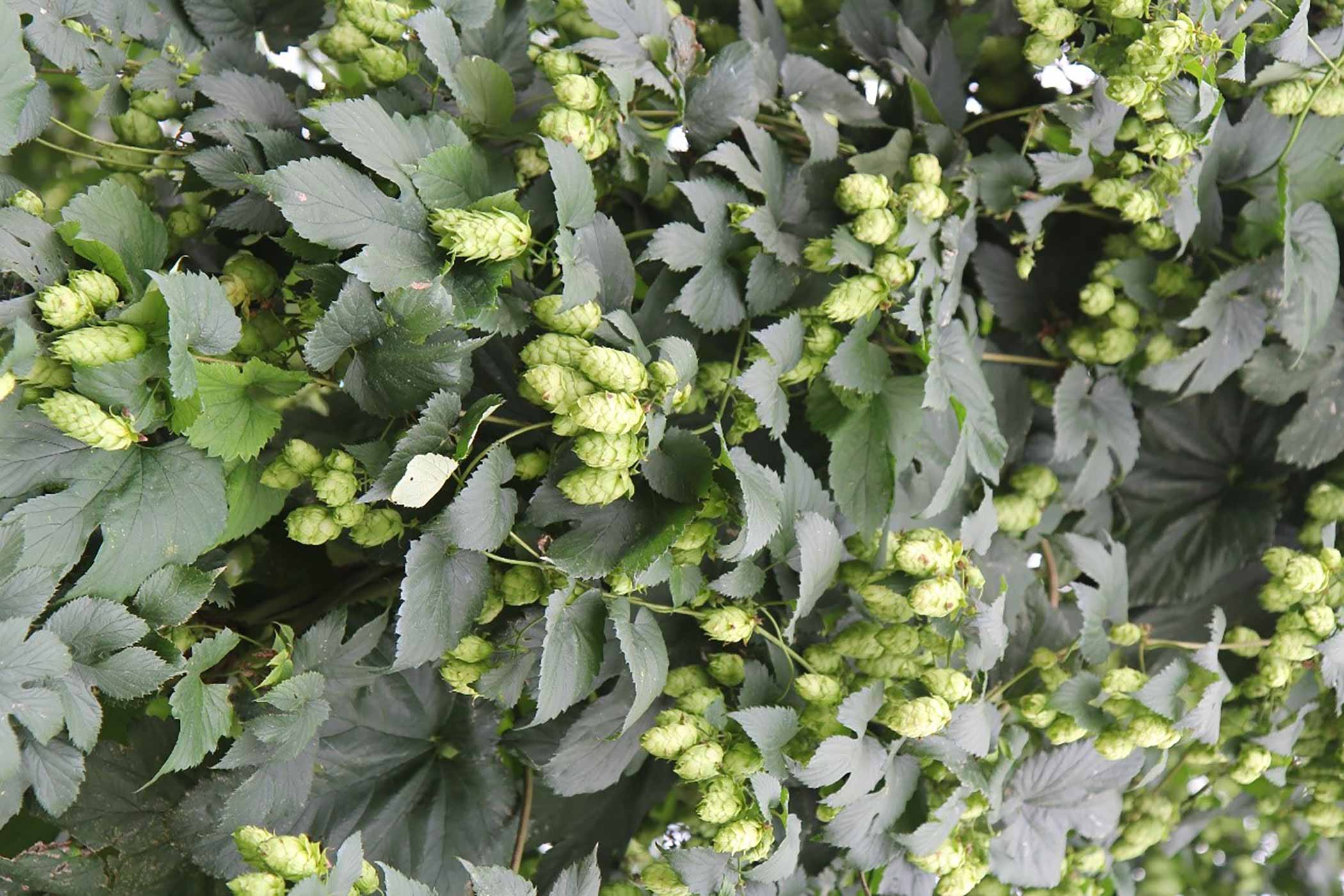Shop
Kazbek: Everything You Need to Know About This Surprising Czech Hop
Move over Saaz (just kidding).
Editor’s Note: This is the third in a series of articles created in collaboration with the Czech Ministry of Agriculture that invited Hop Culture to join a group of American and Canadian brewers on a trade mission trip to the country to learn more about Czech brewing and ingredients.
We’re all standing around a long blue-top table. On top, swathes of blue paper with heaps of dried hops, each designated with a little white place card that says something like Variety: Sladek, Crop Year: 2023 or Variety: Saaz, Crop Year: 2023. All around, people bend down, grabbing a handful of green cones that they crush between the bottoms of their palms, bringing the pieces close to their nose to smell. All the names of the hops look familiar except for one: Kazbek.
Although not new to Czechia, Kazbek hops haven’t entirely made their way across the ocean. Invited on a trade mission by the Czech Ministry of Agriculture, our group of twenty American and Canadian brewers spent a day at Bohemia Hop, one of Czechia’s top hop producers in the Žatec region.
After smelling Saaz, Sladek, and Premiant, Kazbek surprised us the most.
Murmurs rippled around the primarily silent room during this almost meditative ritual.
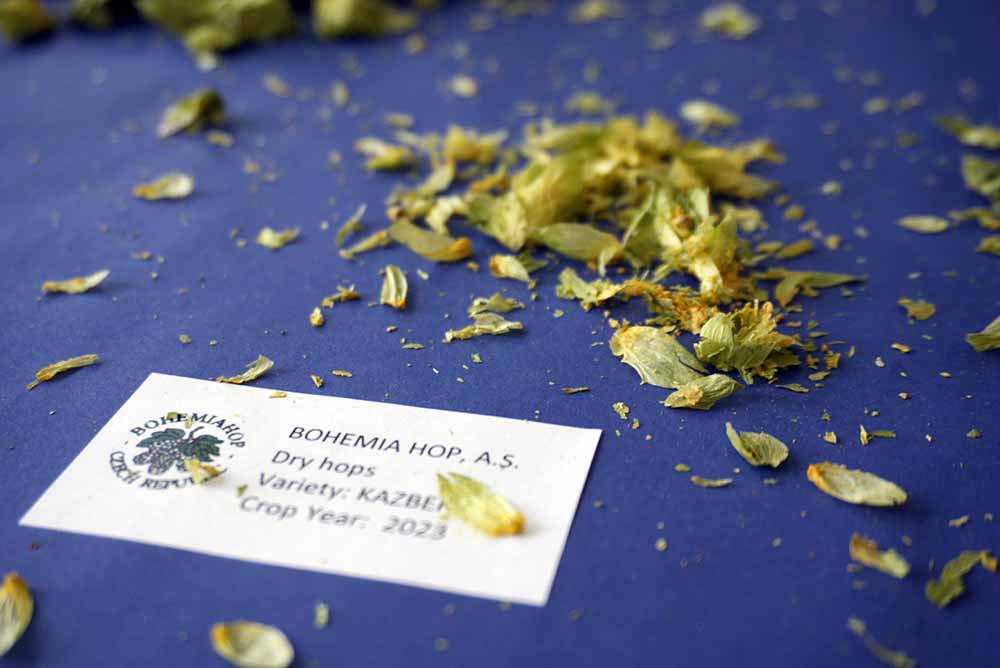
Photography courtesy of Grace Lee-Weitz | Hop Culture

Photography courtesy of Grace Lee-Weitz | Hop Culture
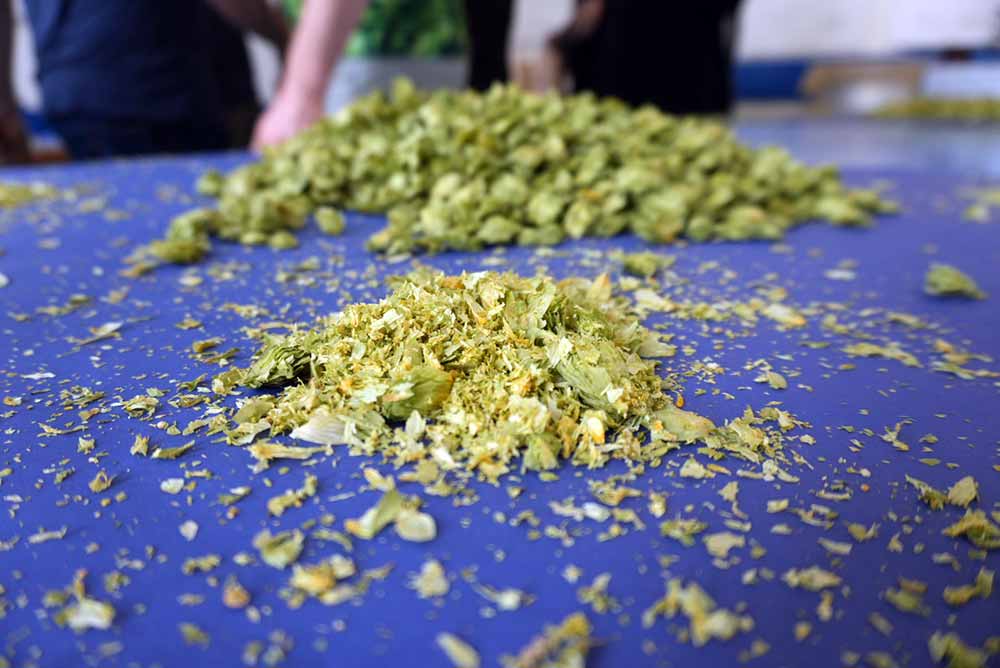
Photography courtesy of Grace Lee-Weitz | Hop Culture
“Oh, wow, this is something I would want to play with,” Al Goodyear, head brewer at Dildo Brewing Co. in Dildo, Newfoundland, Canada, told me. “I should have [smelled] this one last because all I can smell is [Kazbek], a lot of citrus.”
“That hop popped more than any other European hop,” Cody Noland, brewing manager at Amsterdam Brewing in Toronto, jumped in. “I’m definitely reaching out to my rep about that one; that one smelled fantastic.”
That hop stuck with me throughout the trip, along with one question in particular: Why haven’t more brewers heard about Kazbek?
A Quick History of Kazbek
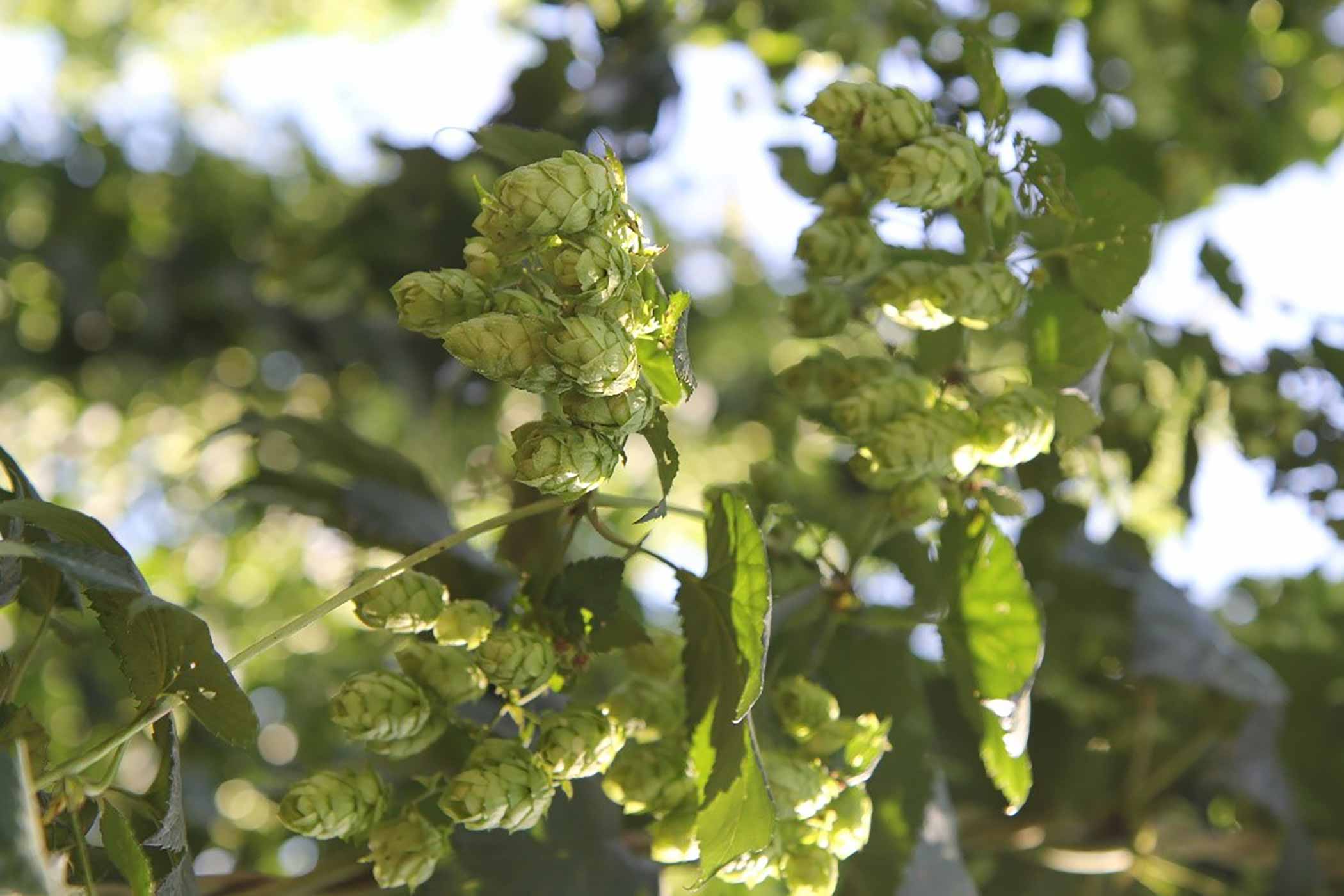
Photography courtesy of Bohemia Hop
Is Kazbek still undiscovered because it’s super brand new?
Nope.
Turns out this hop variety has actually been around for quite a while.
Kazbek, bred by Vladimir Nesvadba at The Hop Research Institute, is a cross between the Bor variety and wild hops from Russia.
Named after the highest mountain in the Northern Caucasus, Kazbek was first released commercially in 2008 after twenty-four years of breeding.
So technically, Kazbek hops aren’t new at all to Czech brewers.
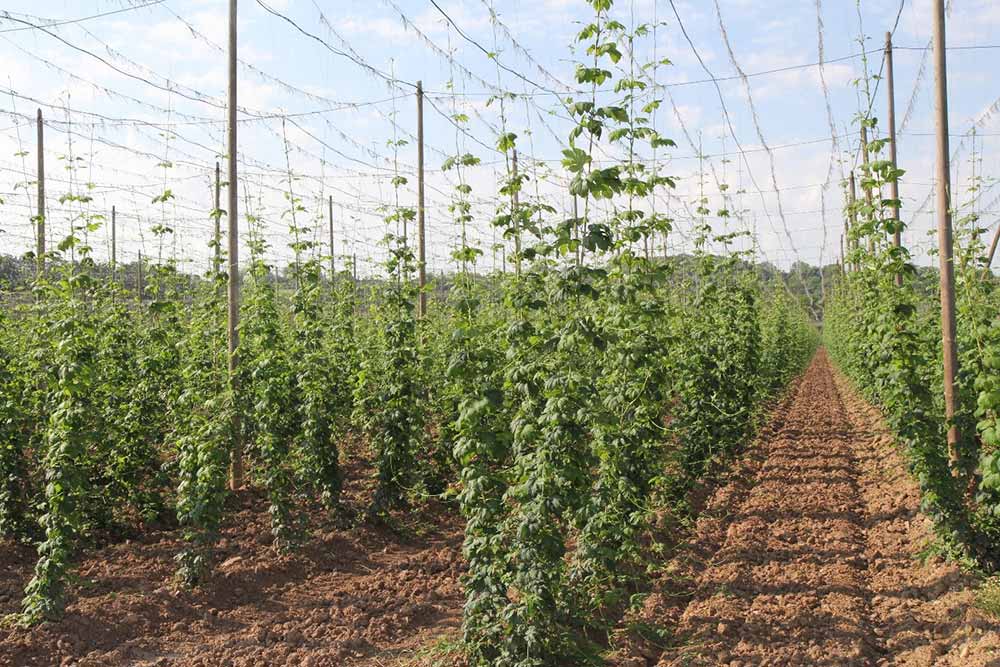
Photography courtesy of Bohemia Hop
“This hop already has a good name in Czechia,” Pivovar Proud Brewmaster Lenka Straková told me after we visited Pilsner Urquell a few days later. While she doesn’t have a beer in the hopper with Kazbek at the moment, she’s brewed with it plenty in the past.
It’s just that more well-known varieties, such as Saaz, Sladek, and Premiant, have shared most of the spotlight.
In fact, according to Bohemia Hop’s 2023 Czech Hop Production report, while farmers harvested over 4,000 hectares of Saaz hops last year, Kazbek only accounted for 22.2 hectares.
But Kazbek has something none of these other hops do.
What Is So Special About Kazbek Hops?
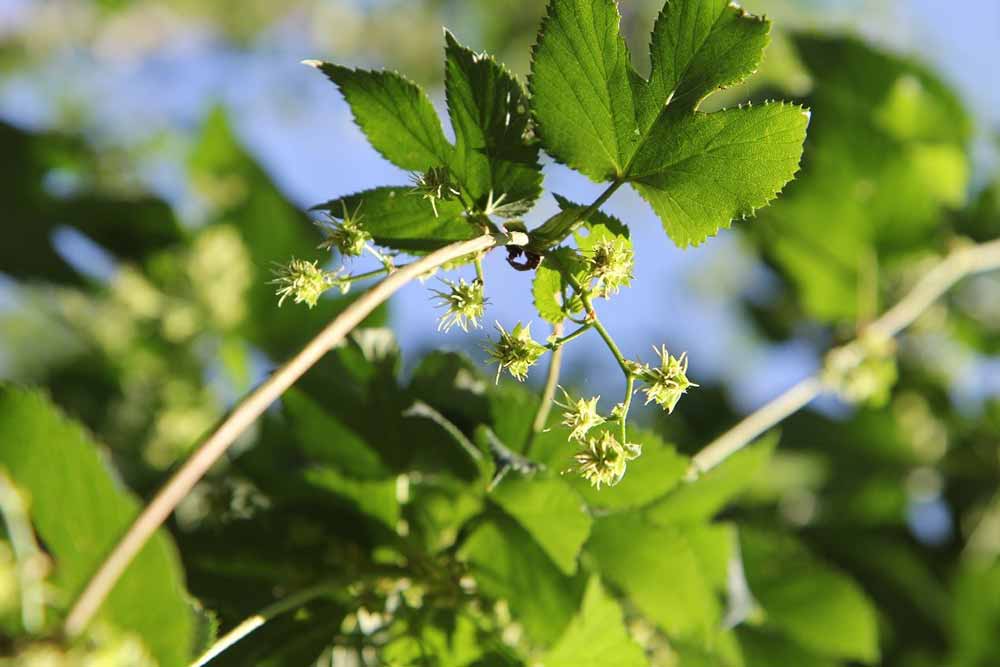
Photography courtesy of Bohemia Hop
Engineered as the first flavor hop variety bred in Czechia, Kazbek’s characteristics stand out.
More popular hops like Saaz, Sladek, and Premiant are all considered aroma hops meant to enhance the olfactory experience of beers. Kazbek, on the other hand, actually works better for both bittering and flavoring.
Bohemia Hop Sales Manager Jan Podsedník and Bohemia Hop Board Chairman Zdeněk Rosa Chmelařství compare Kazbek to Cascade, bursting with citrus notes.
It’s one of the most defining characteristics of this Czech hop.
“The Kazbek hops are unique,” Podsedník told me. “This variety cannot be mistaken for any other.”
Podsedník describes Kazbek as an old-school variety with “nice, clear citrusy lime and grapefruit tones and no ‘artificial’ aroma.”
He says what you smell from rubbing the hop cones will be the same as what you taste in the beer.
Podsedník says the aroma is “distinct and fresh,” and he gets a lot of “lemon honey, grassy, cilantro and grapefruit.”
Similarly, a panel of sommeliers in a study by the Ministry of Agriculture of the Czech Republic described Kazbek’s aroma using attributes such as “mandarin, mint, lemon balm, cilantro and grapefruit.”
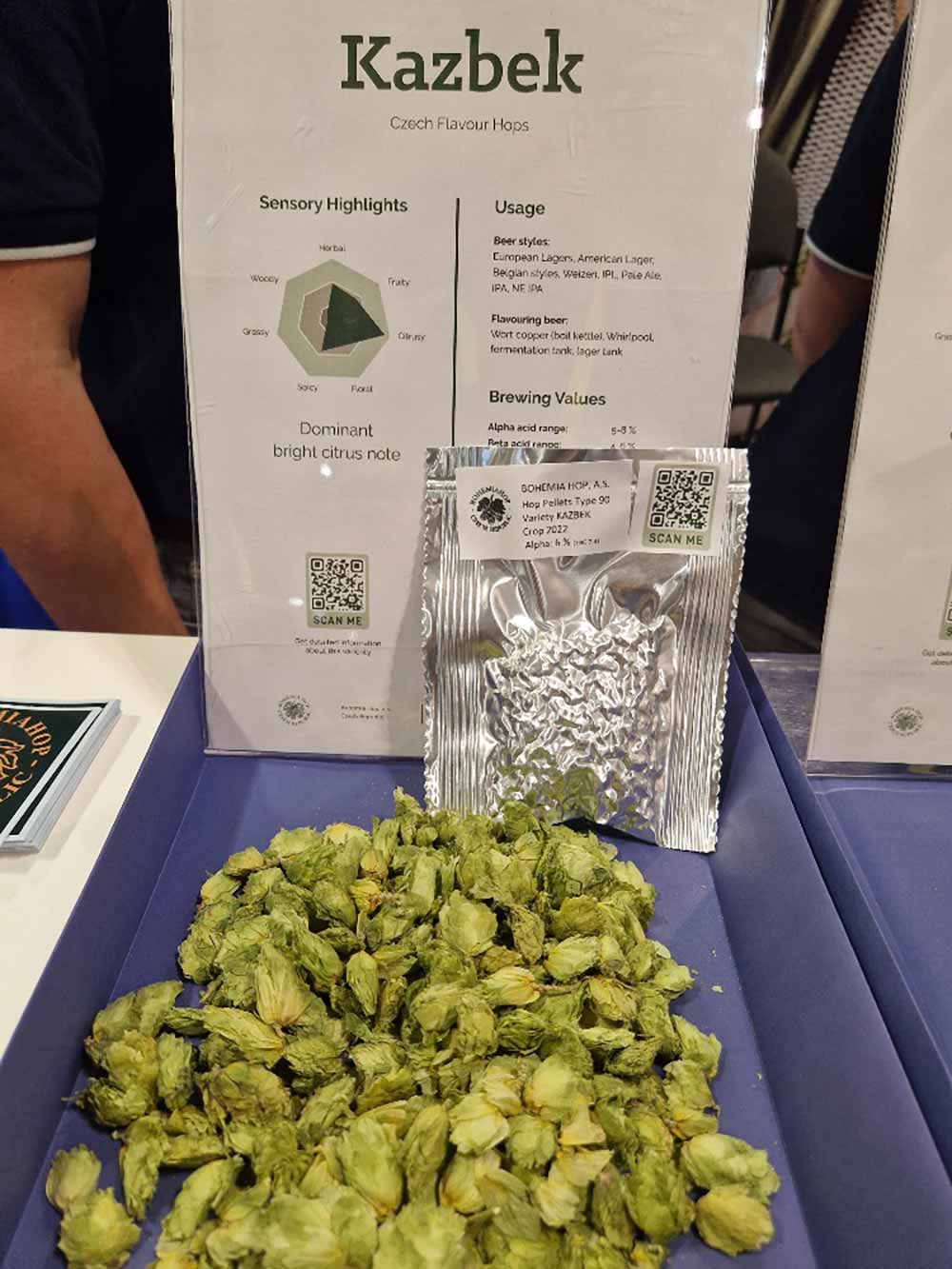
Photography courtesy of Bohemia Hop
In Minnesota, Utepils Head Brewer Eric Harper uses Kazbek in the brewery’s flagship Czech-style pilsner called Pils and Czech dark lager. His business partner discovered Kazbek in 2014 while attending BrauBeviale, one of the top trade fairs for the global beverage industry held in Nuremberg, Germany, every year. He has two words in mind for this hop: lemon peel.
“It’s not in your face,” he says, “but Kazbek has a bright, citrusy lemon-peel aroma.”
When we rubbed Kazbek during our visit to Bohemia Hop, I found this intense pulpy orange and tangerine juice complexion.
Harper notes the flavors are very different from Saaz, typically described as herbal, floral, and spicy.
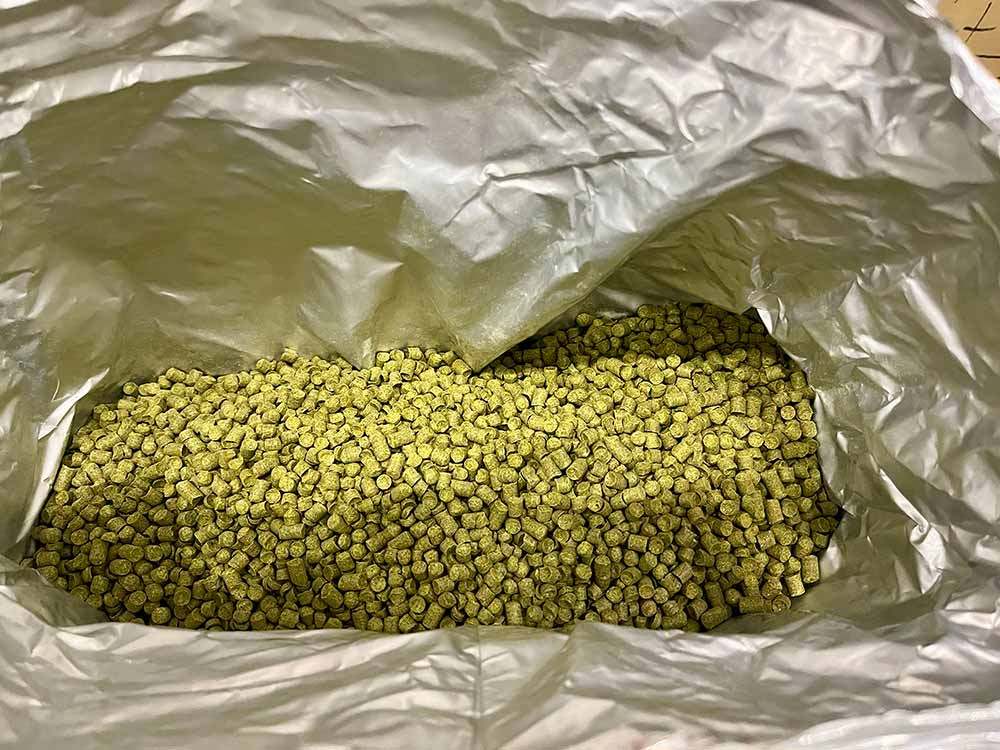
Photography courtesy of Utepils Brewing Co.
“It’s nothing like Saaz,” says Rosa Chmelařství. “Saaz is a really fine aroma hop—the most premium hop for premium lagers—Kazbek has more citrusy notes.”
Kazbek’s advantages go beyond flavor; it’s a very practical hop that provides a high, stable yield of almost three tons per hectare.
“It’s a perfect hop for all the growers because it grows in dry conditions, wet conditions, and in any year, it has good high yields,” Rosa Chmelařství says. “It’s a sustainable solution because it’s a high-yielding [hop], it’s stable, and it can grow in various conditions.”
Pricewise, Rosa Chmelařství says Kazbek could be an excellent choice for brewers looking for a hop like Cascade who either can’t find it or aren’t willing to pay the price for it.
“Especially in the last eight years in Europe and the U.S., the price of hops is very high,” he adds. “Kazbek brought very good value with interesting character for the brewer.”
How Do You Brew With Kazbek?
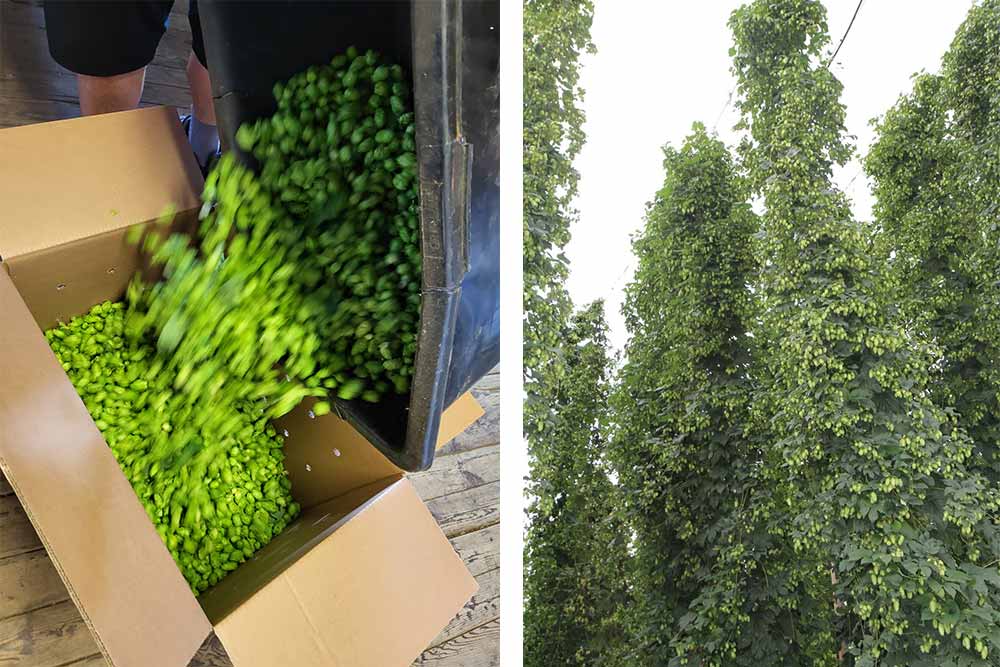
Photography courtesy of Bohemia Hop
Each year, Harper orders a couple hundred pounds of Kazbek hops directly from Bohemia Hop.
He uses them in the brewery’s Pils and Czech dark lager.
In the former, Harper adds a combination of Kazbek, Sladek, and Saaz. “We’re using Kazbek and Sladek right away at the start of the boil for bittering,” he explains, noting that both of those hops have similar alpha acids, around six or seven percent. “Our second addition is split between Kazbek and Saaz, and then we do a third addition maybe fifty minutes in at the end of the boil of just Saaz and add another dose of Saaz to the whirlpool.”

Photography courtesy of Utepils Brewing Co.
For Harper, the Kazbek adds that lemony character. “It’s not crazy in your face,” he notes. “Or crazy like U.S. hops from the Pacific Northwest, but it’s nice.”
Podsedník points out that Kazbek “contributes no unpleasant bitterness due to a good ratio of alpha/beta [acids].” He recommends using Kazbek to dry-hop lagers and IPAs or together with Citra and Cascade. “I have already tried it, and it was very good as well,” he says.
Initially, Rosa Chmelařství says he saw brewers work with Kazbek on the cold side, but the hot side works just as well.
“I would say dry hopping is the primary use, but not the only one,” says Rosa Chmelařství. “We would like to see [brewers] use it all the way … both for kettle and dry hopping.”
The versatility of Kazbek means Rosa Chmelařství thinks the hop can work across a variety of styles from lager to ales like IPA or hefeweizens.
“A very good use is with wheat beers because the hops are not that intensive,” he says.
Podsedník says Kazbek is great for traditional IPAs, IPLs, lagers, and summer ales.
Why Isn’t Kazbek More Popular in North America…Yet?
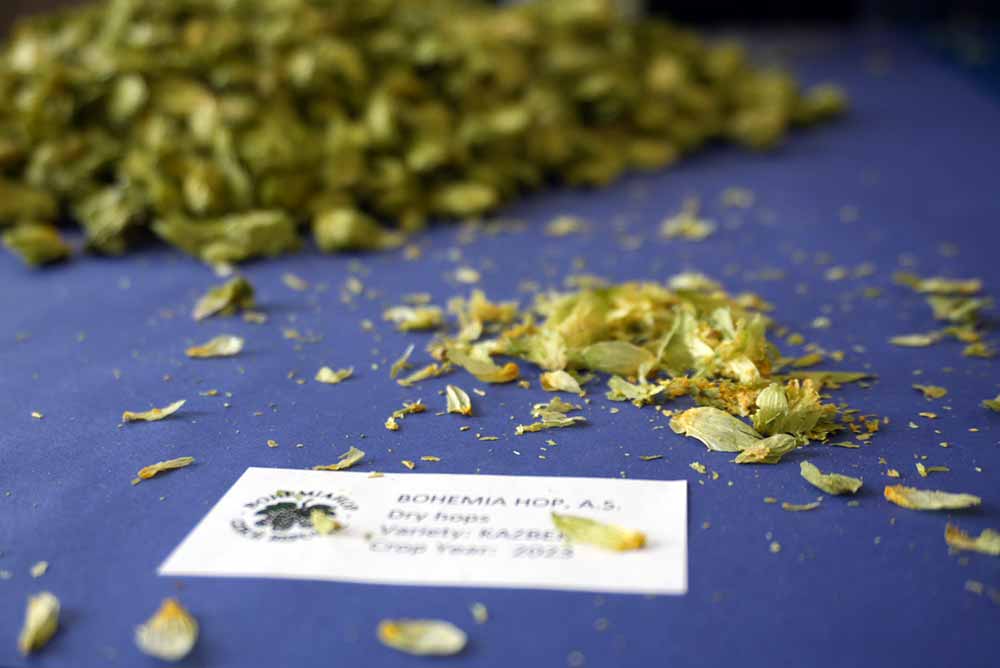
Photography courtesy of Grace Lee-Weitz | Hop Culture
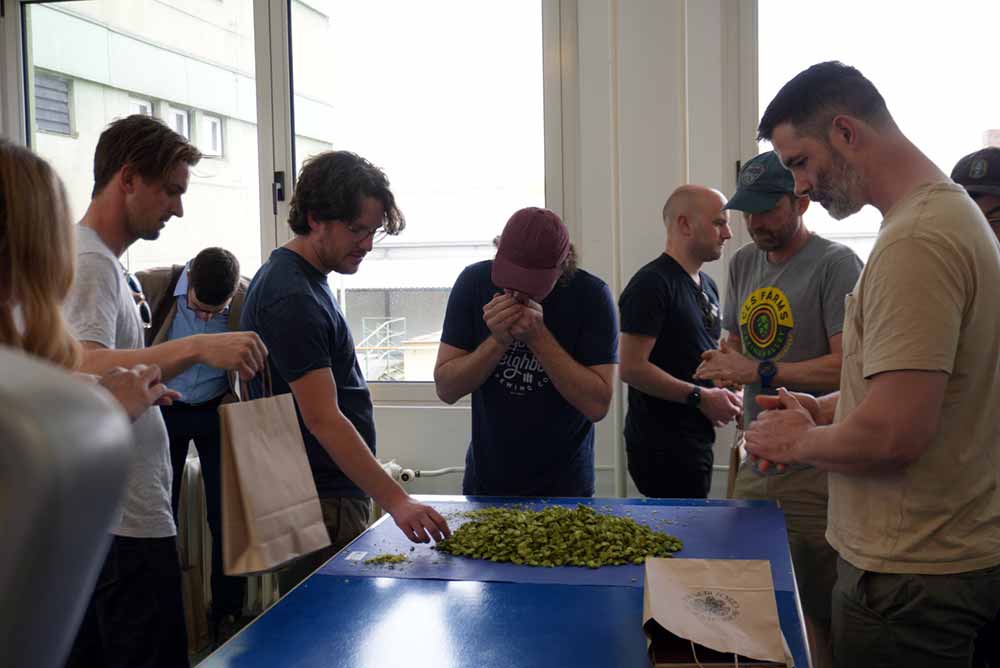
Photography courtesy of Grace Lee-Weitz | Hop Culture
Rosa Chmelařství shared that they actually have relationships with brewers all over the world working with Kazbek.
So why hasn’t the hop taken off here in the U.S. yet?
“It can be a problem of where Kazbek belongs in the category,” shares Straková. “If you have a wide portfolio of U.S. hops [available], it’s hard to say why you would import Kazbek if you have your Cascade or other varieties.”
Podsedník doesn’t think the variety will become mainstream, but it will “remain unique,” he says. “Czech growers like this variety and would have no problem expanding the acreage.”
Harper thinks it’s a case of we don’t know what we don’t know.
“We know Saaz because that region has a long history and heritage,” he says, pointing out that there are many Czech hop varieties we don’t hear about at all. “We just haven’t been marketed to as brewers.”
But hopefully, that’s changing.
When I texted Noland two months after we both left Czechia to follow up, he told me he’d already ordered some Kazbek; the shipment showed up at the brewery straight from Bohemia Hop last Friday. He’s still working on how and when he’ll brew with it.
As for Harper, he encourages more brewers to give it a whirl.
“Most of the time, people are [just] using Czech malt and Saaz, so to have another, unique hop variety in there makes for a slightly different beer than what’s commercially available or even at most breweries around town,” he tells me. “It’s a differentiator in our pilsner for sure!”

